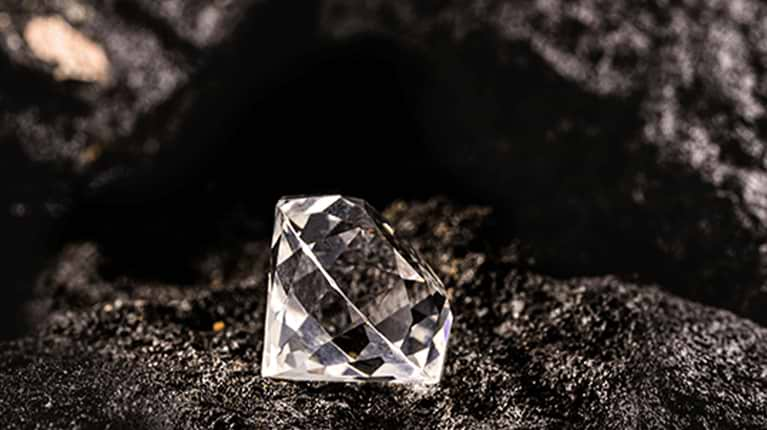- Introduction: The Hidden Ethical Quandary
- 1. The Conventional Diamond Industry: Unearthing Ethical Concerns
- 2. Ethical Alternatives: Exploring Lab-Grown Diamonds
- 3. The Ripple Effect: Impact of Consumer Choices
- Navigating the Moral Labyrinth: Finding Balance
- Conclusion: Shaping a Ethical Diamond Industry
Introduction: The Hidden Ethical Quandary
The allure of diamonds, with their sparkling brilliance and timeless elegance, has captivated humanity for centuries. However, beneath their shimmering facade lies a complex web of ethical considerations. In recent years, the concept of “mined diamonds karma” has emerged, raising profound questions about the ethical implications of diamond mining and consumption.
1. The Conventional Diamond Industry: Unearthing Ethical Concerns
The Dark Origins: Blood Diamonds
Environmental Impact: Ecological Footprint of Mining
Exploitation of Labor: Human Rights Violations
2. Ethical Alternatives: Exploring Lab-Grown Diamonds
Ethical Integrity: Conflict-Free Origins
Environmental Sustainability: Reducing Carbon Footprint
Social Responsibility: Fair Labor Practices
3. The Ripple Effect: Impact of Consumer Choices
Conscious Consumerism: Empowering Ethical Choices
Shifting Paradigms: Demanding Transparency
Collective Responsibility: Driving Industry Change
Navigating the Moral Labyrinth: Finding Balance
As consumers, we hold the power to shape the future of the diamond industry through our choices. By delving deeper into the intricate dynamics of mined diamonds karma, we can navigate the moral labyrinth and strive for a more ethical and sustainable path forward.
In a world where every purchase carries ethical implications, the decision to buy a diamond is no exception. The conventional diamond industry has long been plagued by ethical concerns, ranging from human rights violations to environmental degradation. This begs the question: what is the true cost of a mined diamond?
The Conventional Diamond Industry: Unearthing Ethical Concerns
The Dark Origins: Blood Diamonds
At the heart of the ethical dilemma surrounding mined diamonds lies the issue of blood diamonds, also known as conflict diamonds. These diamonds are mined in war zones and sold to finance armed conflict against governments, often leading to human rights abuses and civil unrest. Despite efforts to curb their trade, blood diamonds continue to seep into the global market, tainting the integrity of the diamond industry.
Environmental Impact: Ecological Footprint of Mining
Diamond mining exacts a heavy toll on the environment lab diamonds, from deforestation and habitat destruction to soil erosion and water contamination. The extraction process involves immense energy consumption and releases carbon emissions, contributing to climate change and ecological degradation. The scars left by diamond mining endure long after the last gem has been unearthed, leaving ecosystems irreversibly damaged.
Exploitation of Labor: Human Rights Violations
In regions where diamond mining is prevalent, such as parts of Africa and South America, labor practices often fall short of ethical standards. Workers, including children, are subjected to hazardous conditions, meager wages, and exploitation by unscrupulous employers. The human toll of diamond mining extends far beyond the glittering façade, leaving a trail of suffering and injustice in its wake.
Ethical Alternatives: Exploring Lab-Grown Diamonds
Ethical Integrity: Conflict-Free Origins
Unlike mined diamonds, lab-grown diamonds offer a transparent and ethical alternative. Cultivated in controlled environments using advanced technology, these diamonds are free from the ethical baggage associated with traditional mining. By opting for lab-grown diamonds, consumers can ensure that their purchase aligns with their values and principles.
Environmental Sustainability: Reducing Carbon Footprint
Lab-grown diamonds boast a significantly lower environmental footprint compared to their mined counterparts. The production process requires less energy and water, generates fewer carbon emissions, and minimizes ecological disruption. As concerns about climate change escalate, the environmental benefits of lab-grown diamonds are increasingly appealing to eco-conscious consumers.
Social Responsibility: Fair Labor Practices
In addition to their environmental advantages, lab-grown diamonds uphold principles of social responsibility and fair labor practices. Workers involved in the production process are treated ethically and compensated fairly for their labor. By supporting ethical labor practices, consumers can contribute to the well-being of workers and communities worldwide.
The Ripple Effect: Impact of Consumer Choices
Conscious Consumerism: Empowering Ethical Choices
As awareness of ethical issues surrounding diamond mining grows, consumers are empowered to make more informed and ethical choices. By prioritizing transparency and ethical sourcing, consumers can drive positive change within the diamond industry and advocate for greater accountability.
Shifting Paradigms: Demanding Transparency
In response to consumer demand for ethical diamonds, industry stakeholders are beginning to prioritize transparency and sustainability. Companies are increasingly adopting ethical sourcing practices, implementing traceability measures, and embracing third-party certifications to verify the origins of their diamonds. By demanding transparency, consumers can hold companies accountable and push for greater integrity within the industry.
Collective Responsibility: Driving Industry Change
Ultimately, the quest for ethical diamonds is a collective endeavor that requires collaboration between consumers, industry players, and regulatory bodies. By leveraging our collective voice and purchasing power, we can catalyze meaningful change and pave the way for a more ethical and sustainable diamond industry. Together, we can uphold the principles of mined diamonds karma and forge a brighter future for generations to come.
Conclusion: Shaping a Ethical Diamond Industry
In the realm of mined diamonds karma, every choice we make carries profound implications for the environment, society, and future generations. By embracing ethical alternatives such as lab-grown diamonds and advocating for transparency and accountability, we can shape a diamond industry that reflects our values and aspirations. As we navigate the moral labyrinth of diamond consumption, let us tread carefully, mindful of the ripple effects of our actions, and strive for a future where brilliance shines ethically and sustainably.



